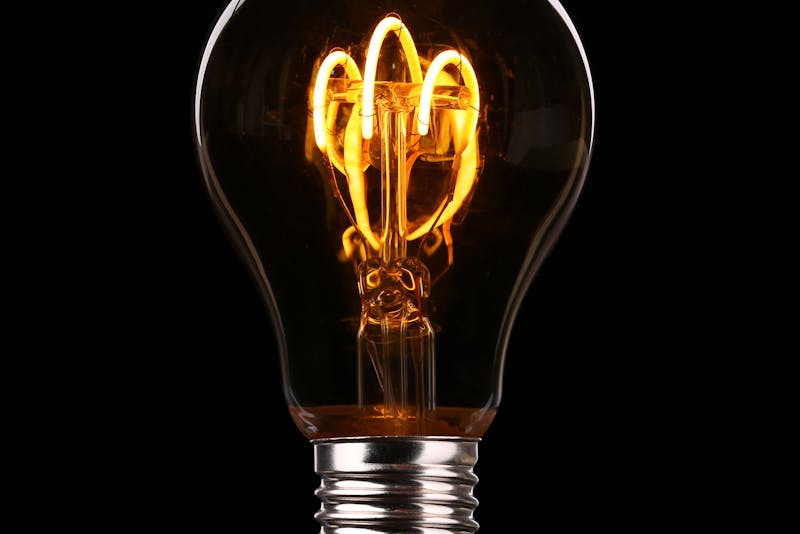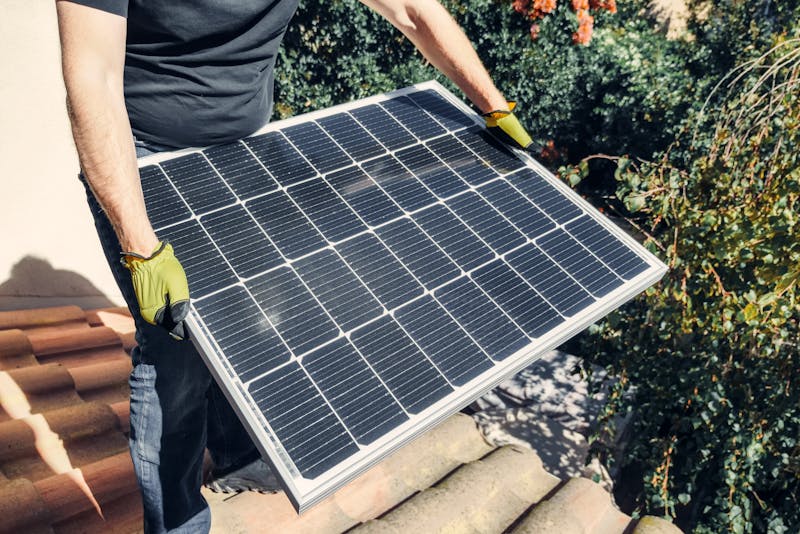- Upgrading your electrical panel improves energy distribution, safety, and reliability throughout your home.
- Signs of an outdated panel include frequent breaker trips, flickering lights, and difficulty powering modern appliances.
- Modern or smart panels support high-efficiency appliances, electric vehicle chargers, and renewable energy systems.
- A panel upgrade can indirectly reduce energy bills by preventing energy waste and stabilizing electricity flow.
- Planning an upgrade requires assessing energy needs, choosing the right panel, and hiring a licensed electrician.
- Integrating smart home energy systems and energy-efficient appliances maximizes the benefits of the upgrade.
- Upgraded panels contribute to a more sustainable, future-ready home by supporting green technologies and reducing carbon footprint.
Homeowners today are increasingly focused on reducing their energy consumption and lowering utility bills. One often-overlooked aspect of home energy efficiency is the electrical panel. An outdated or insufficient electrical panel can hinder your home’s ability to use energy efficiently, especially when running multiple modern appliances, smart devices, or renewable energy systems. Upgrading your electrical panel not only improves safety and reliability but also enables more efficient energy use throughout your home.
In this comprehensive guide, we’ll explore why an electrical panel upgrade matters, how it affects energy efficiency, and what homeowners should consider when planning an upgrade.
What is an Electrical Panel and Why Does it Matter?
An electrical panel, sometimes called a breaker box or distribution board, serves as the main control center for your home’s electricity. It directs power to various circuits, including outlets, lighting, and appliances, while protecting your home with circuit breakers that prevent overloads and potential hazards.
How Electrical Panels Work
Electrical panels receive power from your utility provider and divide it among circuits in your home. Each circuit is protected by a breaker, which prevents overloads and potential fires. Modern panels can handle higher loads, accommodate smart home devices, and integrate with energy-efficient systems.
Why Your Electrical Panel Affects Energy Efficiency
Older panels may struggle with modern energy demands, causing inefficient energy distribution or even energy waste. Upgrading your panel can optimize energy usage, support high-efficiency appliances, and reduce the strain on your home’s electrical system.
Signs Your Home Needs an Electrical Panel Upgrade

Many homeowners are unaware that their electrical panel may be limiting energy efficiency. Recognizing the warning signs can prevent problems and boost energy performance.
Common Indicators
- Frequent tripped breakers
- Flickering or dimming lights
- Burning smell or heat from the panel
- Difficulty powering modern appliances or multiple devices simultaneously
- Home has an outdated panel (typically older than 20–30 years)
Energy Efficiency Implications
Outdated panels can cause uneven energy distribution, leading to wasted electricity and higher energy bills. By upgrading, you ensure that your home’s electrical system is capable of efficiently managing current and future energy demands.
How Electrical Panel Upgrades Improve Energy Efficiency
Upgrading your electrical panel has direct and indirect effects on energy efficiency. Here’s how a modern panel can make a difference.
Improved Energy Management
Modern panels allow for better control over how electricity is distributed in your home. They can accommodate:
- High-efficiency appliances
- Smart home energy systems
- Electric vehicle chargers
- Solar energy integration
Reduced Energy Waste
Older panels may not distribute power evenly, causing appliances to operate inefficiently. A new panel ensures stable voltage, which improves appliance performance and reduces unnecessary energy consumption.
Safety and Efficiency Benefits
Upgrading reduces the risk of electrical fires and system failures, which indirectly saves energy by avoiding emergency repairs and maintaining consistent electricity use.
Electrical Panel Upgrade Options for Homeowners
There are several upgrade options depending on your home’s size, energy usage, and future plans.
Standard Panel Replacement
Replacing an old panel with a modern one is the most common approach. Standard upgrades usually involve:
- Increasing amperage capacity (e.g., 100A to 200A)
- Installing new circuit breakers
- Ensuring compliance with current electrical codes
Subpanels for High-Energy Areas
Adding a subpanel is ideal if certain areas of your home have high energy demands, such as a home office or kitchen. Benefits include:
- Localized energy control
- Easier addition of new circuits
- Enhanced efficiency in energy distribution
Smart Panels
Smart electrical panels provide advanced energy monitoring and management. Features include:
- Real-time energy usage tracking
- Remote control of circuits
- Integration with smart home devices
- Support for solar and battery storage systems
How to Plan an Electrical Panel Upgrade
A successful electrical panel upgrade requires careful planning and professional guidance.
Assess Your Energy Needs
Consider your current and future energy usage:
- Number of appliances
- Smart devices
- Electric vehicle charging
- Renewable energy systems
Choose the Right Panel
Select a panel that meets your home’s energy demands and allows room for future expansion.
Hire a Licensed Electrician
Upgrading an electrical panel is not a DIY project. A licensed electrician ensures:
- Safety and compliance with local codes
- Proper installation
- Efficient integration with existing systems
Budget Considerations
Costs vary based on panel size, labor, and additional features:
- Standard upgrades: $1,500–$3,000
- High-capacity or smart panels: $3,000–$5,000
- Additional electrical work (rewiring, subpanels) may increase costs
Common Questions About Electrical Panel Upgrades
Homeowners often have questions about the process and benefits of panel upgrades. Here are some key queries answered.
How Long Does an Upgrade Take?
Most standard panel upgrades take 4–8 hours, depending on complexity. Larger or smart panel installations may take longer.
Will It Increase My Home’s Value?
Yes. An upgraded panel enhances home safety and energy efficiency, which is appealing to buyers and can increase resale value.
Can It Reduce Energy Bills?
Indirectly, yes. By supporting high-efficiency appliances and stabilizing electricity flow, an upgraded panel can prevent energy waste and reduce unnecessary electricity consumption.
Is a Permit Required?
Almost always. Electrical panel upgrades require permits to ensure the work meets local safety codes and standards.
Tips for Maximizing Energy Efficiency After a Panel Upgrade

Upgrading your panel is only part of improving home energy efficiency. These strategies help you maximize the benefits.
Invest in Energy-Efficient Appliances
Modern appliances work best with stable, high-quality electricity from an upgraded panel. Look for ENERGY STAR-certified devices.
Integrate Smart Home Energy Systems
Smart thermostats, lighting controls, and energy monitors can optimize energy usage and reduce waste.
Consider Renewable Energy
A modern panel can handle solar panels, battery storage, and other green energy systems, reducing reliance on the grid.
Schedule Regular Maintenance
Routine checks ensure that your electrical system remains safe and efficient, preventing energy loss over time.
Electrical Panel Upgrade and Sustainability
Upgrading your electrical panel is not just about convenience and safety—it contributes to a greener, more sustainable home.
Lower Carbon Footprint
Efficient energy distribution means less wasted electricity, reducing your household’s overall carbon footprint.
Enable Green Technology
Support for solar panels and battery storage systems allows you to integrate renewable energy, further improving sustainability.
Future-Proof Your Home
A modern panel accommodates future energy-efficient technologies, ensuring your home remains environmentally friendly and energy-efficient for years to come.
The Role of Electrical Panels in Supporting Smart Home Technology
Modern homes are increasingly equipped with smart devices that optimize energy use, including thermostats, lighting, and home security systems. An outdated electrical panel may struggle to support these technologies efficiently, leading to power fluctuations or limited functionality. Upgrading your panel ensures that all smart devices receive stable and sufficient power, allowing them to operate at peak performance.
Additionally, smart-compatible panels can provide real-time energy monitoring, helping homeowners track usage patterns and make informed decisions about energy consumption. Investing in a panel upgrade is not just about current needs—it prepares your home for future smart home expansions.
Preparing Your Home for Renewable Energy Integration
Renewable energy systems, such as solar panels or home battery storage, require a reliable and modern electrical panel for safe and efficient operation. Older panels often lack the capacity to accommodate additional circuits or handle the bidirectional flow of electricity from solar systems. Upgrading your panel ensures your home can safely store and distribute renewable energy while maximizing efficiency. Benefits include:
- Seamless integration with solar panels and inverters
- Optimized energy storage and usage
- Reduced reliance on the grid, lowering energy bills
- Enhanced safety and compliance with electrical codes
A panel upgrade is a crucial step for homeowners committed to sustainable energy solutions.
Common Mistakes to Avoid During an Electrical Panel Upgrade
Electrical panel upgrades can significantly improve home energy efficiency, but improper planning or installation can lead to costly mistakes. Homeowners should avoid:
- Choosing a panel with insufficient capacity for current and future energy needs
- Attempting a DIY installation without proper licensing and safety knowledge
- Ignoring local electrical codes and permitting requirements
- Overlooking the potential need for subpanels or rewiring in high-demand areas
By planning carefully, consulting a licensed electrician, and considering future energy demands, you can ensure that your electrical panel upgrade is both safe and effective. Avoiding these common pitfalls maximizes energy efficiency and long-term reliability.
Conclusion
Electrical panel upgrades are a critical step in improving home energy efficiency, safety, and long-term sustainability. By understanding your home’s energy needs, selecting the right panel, and implementing energy-saving strategies, homeowners can enjoy a more reliable electrical system and lower energy costs. Whether you’re planning to add high-efficiency appliances, integrate smart technology, or transition to renewable energy, a modern electrical panel is the foundation for a more efficient, sustainable, and future-ready home.



